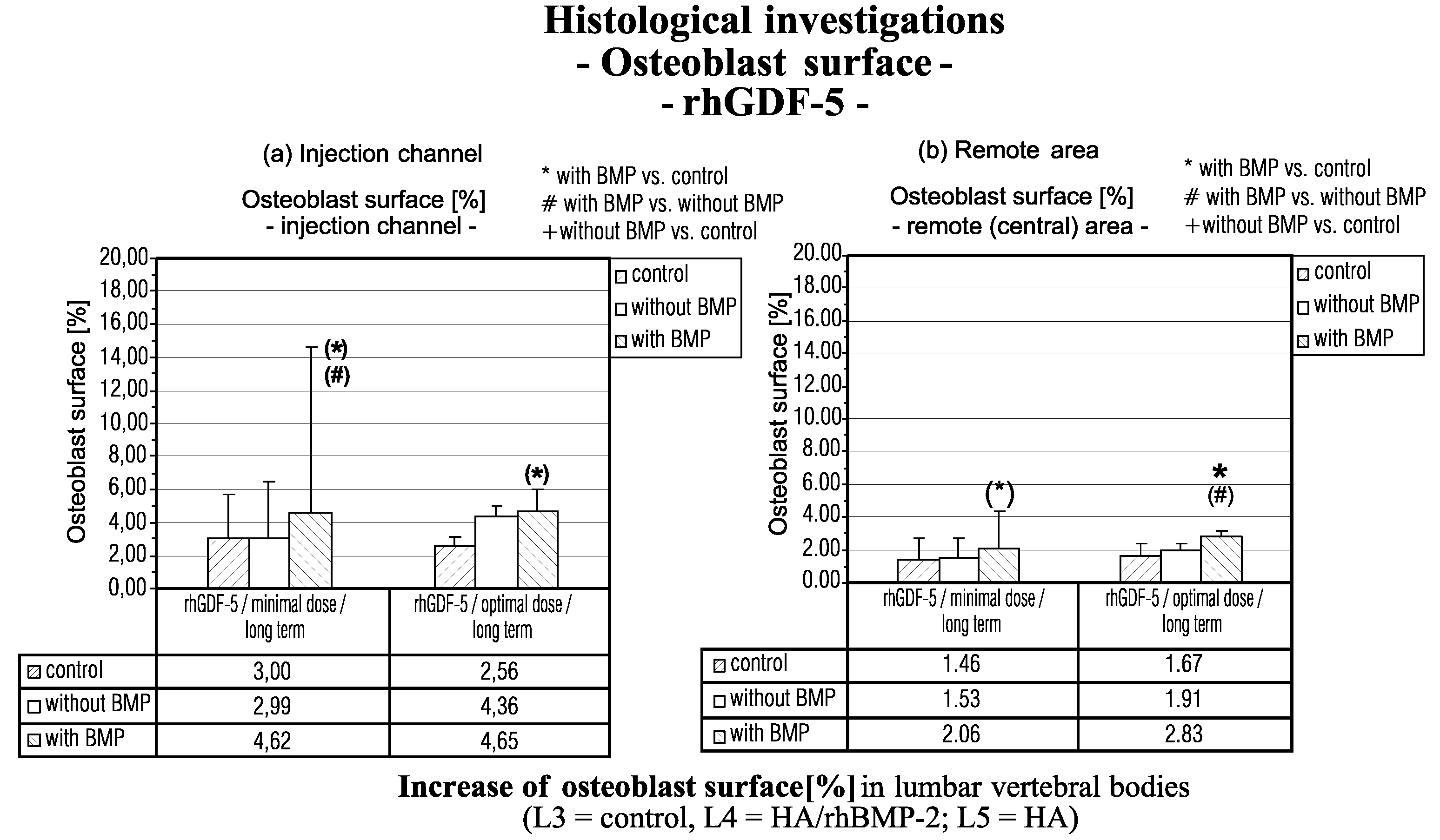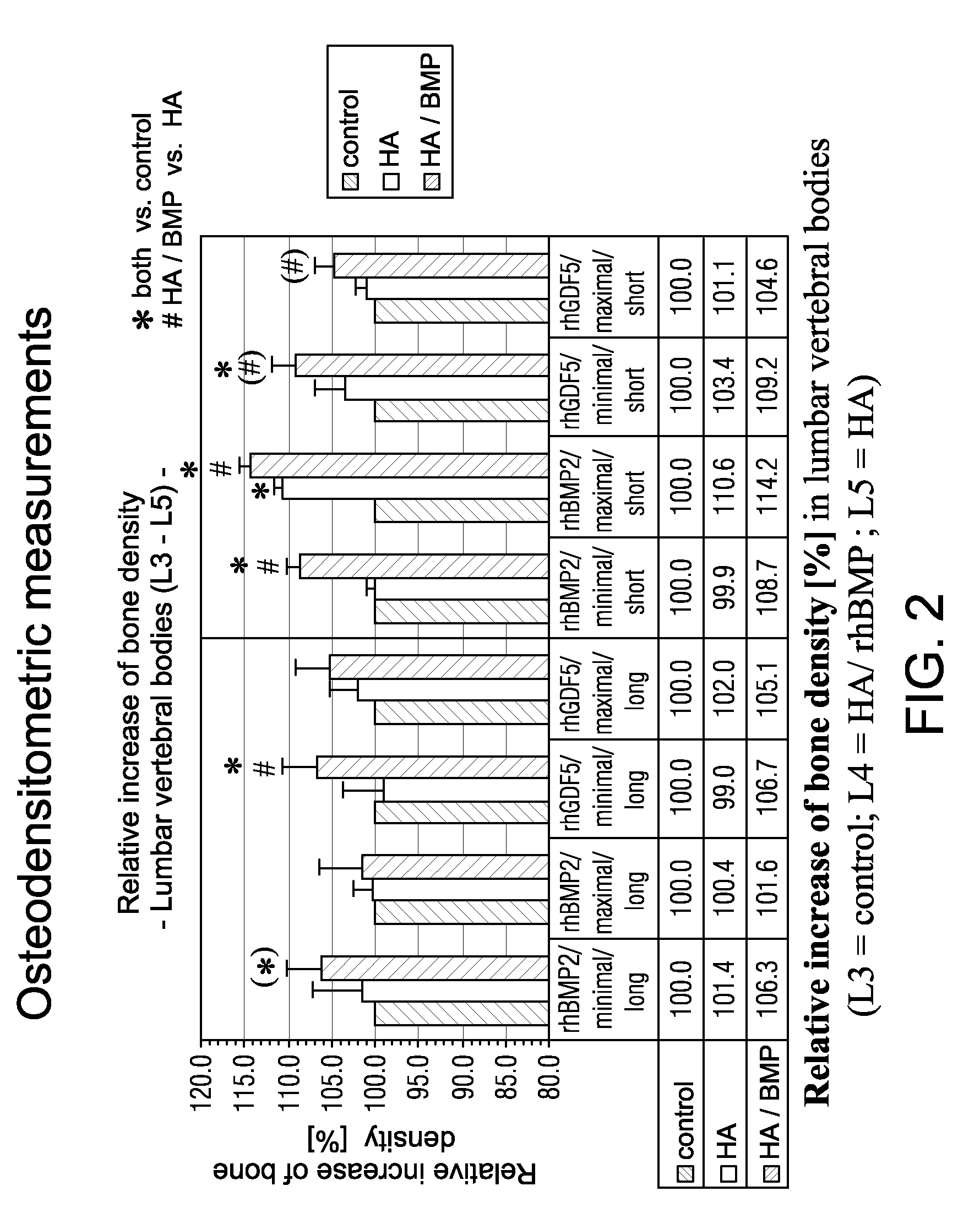Calcium phospate based delivery of growth and differentiation factors to compromised bone
a calcium phospate and differentiation factor technology, applied in the field of growth and differentiation factor, can solve the problems of poor fracture healing, poor osteoblast surface, and implants that might work well in young adults, and achieve the effect of increasing the surface of the osteoblas
- Summary
- Abstract
- Description
- Claims
- Application Information
AI Technical Summary
Benefits of technology
Problems solved by technology
Method used
Image
Examples
example 1
[0104]Forty-eight (48) aged, osteoporotic sheep were subdivided into 8 groups and treated with different dosages of non-glycosylated recombinant human GDF-5 (FIG. 1. (C)) (Hortschansky et al., Hans-Knoll Institute, Jena, Germany) via a fusion protein precursor (FIG. 1(B)) from the nucleotide sequence shown in FIG. 1(A) and non-glycosylated recombinant human BMP-2 (Hortschansky et al., Hans-Knoll Institute, Jena). Groups 1, 3, 5, and 7 were treated with a minimal dosage of a composition comprising hydroxyapatite (HA) (CAMCERAM, HA protein coating powder, CAM Implants, B.V. Leiden, The Netherlands)) and rhBMP-2 and rhGDF-5, respectively, while groups 2, 4, 6, and 8 were treated with the maximal dosages of these compositions. A control (vertebral body not treated) and a HA only group in which the vertebral body was only treated with HA, were also included in the study. The experimental design is depicted in Table 1, which indicates that observations were made short-term (three months) ...
example 2
[0106]A CaP-GDP composition comprising calciumhydrogenphophate anhydride, a microscaffold coated with nanocrystalline calciumhydrogenphophate anhydride, GDP-5 at a total concentration of 100 μg is provided. The composition is admixed with a buffer solution to reach a suitable viscosity for injection and is injected into a fractured vertebral body of a patient with a 9 gauge injection needle having an inner diameter of 2.2 mm. The injected CaP-GDP composition hardens in situ. During the hardening process pores are formed. The pores formed have an average diameter of less than 100 μm. The compression strength of the hardened CaP-GDP composition is less than 100 MPa and has an elastic modulus of more than 1000 MPa. GDF is released into the fractured vertebral body and induces and / or furthers osteogenesis in the vertebral body despite the pathological reduction of osteogenesis in the patient. New bone initially forms in the pores of the hardened composition and stepwise replaces parts o...
example 3
[0107]Four to six weeks after the procedure in Example 2 has been completed, a composition as described in Example 2 is injected into vertebral bodies adjacent to the fractured vertebral body of the patient in Example 2. Upon injection, bone formation is also induced and / or furthered in those adjacent vertebral bodies to increase their compression strength. This preventive treatment of the adjacent vertebral bodies reduces the risk of subsequent fractures.
PUM
| Property | Measurement | Unit |
|---|---|---|
| diameter | aaaaa | aaaaa |
| size | aaaaa | aaaaa |
| size | aaaaa | aaaaa |
Abstract
Description
Claims
Application Information
 Login to View More
Login to View More - R&D
- Intellectual Property
- Life Sciences
- Materials
- Tech Scout
- Unparalleled Data Quality
- Higher Quality Content
- 60% Fewer Hallucinations
Browse by: Latest US Patents, China's latest patents, Technical Efficacy Thesaurus, Application Domain, Technology Topic, Popular Technical Reports.
© 2025 PatSnap. All rights reserved.Legal|Privacy policy|Modern Slavery Act Transparency Statement|Sitemap|About US| Contact US: help@patsnap.com



